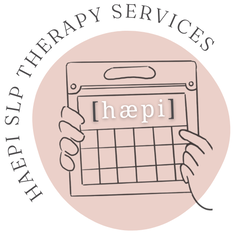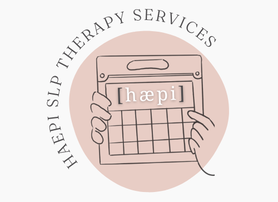|
To all Speech-Language Professionals: if you've ever wondered how you were going to model AAC to a child with a device during a virtual session, I hear you!
We know AAC is best modelled in natural environments and during play, and while most SLPs have figured out ways to do something resembling play-based therapy over Zoom, AAC can feel like a whole other ballgame. So, I wanted to show you one of my favourite resources to use: music videos and songs! This is completely free using YouTube. I'll sometimes do a Boom Deck first or something that teaches the target words (e.g., we learned "go" and "stop" in a Boom Deck game) and then follow that up with "singing" along to a song. I have an iPad Pro that I like to use for modelling as it's quite a bit bigger and therefore easier to see on Zoom while the video is playing. I also like to use this with "Head, Shoulders, Knees, and Toes" and "5 Little Ducks." Just because our kids may live in hard to reach places (like in remote Northern communities), this doesn't mean we can't still do play-based AAC virtually... we just need to be creative! by Halle Demchuk, SLPPaediatric SLP | GLP-Trained Clinician | Owner of HAEPI SLP
I am honoured to have had the opportunity to chat with Corinne Zmoos, MS, CCC-SLP, on an episode of her podcast, The Gestalt Get-Together!
In this episode, we talk all about my fly-in service delivery to remote Indigenous communities, cultural responsivity, as well as new things happening at HAEPI SLP Therapy Services such as Music-Directed Speech Therapy (and how this is benefitting our gestalt language processors!). Content warning: This episode includes discussion of the Canadian Residential School System, the '60s Scoop, and generational trauma. Please listen with care. by Halle Demchuk, SLPPaediatric SLP | GLP-Trained Clinician | Owner of HAEPI SLP
Check out a glimpse of Kaelyn's Music-Directed Speech Therapy session with a Stage 1 GLP and new AAC user!
Music is highly motivating for many gestalt language processors due to musical features like intonation and pitch. You'll notice how this child actually requested help when he gestured for Kaelyn to touch his device, which demonstrates how quickly he has learned the purpose of an AAC device for communication. Furthermore, watch how Kaelyn honours every mode of communication, whether it be speech, gestures, or AAC. This child also receives GLP-focused intervention with an SLP to expand his repertoire of Stage 1 gestalts. Lastly, we have the school to thank for letting us work in the sensory room, where this child can receive external sensory input to aid in regulation. We love a full team approach! by Halle Demchuk, SLPPaediatric SLP | GLP-Trained Clinician | Owner of HAEPI SLP
Tag along with Kaelyn to a Music-Directed Speech Therapy session with a gestalt language processor in stage 2 (mitigations!) of the Natural Language Acquisition framework. Kaelyn is working on naturally modelling mitigations (or changing some parts of a script/song within a familiar "frame") in her music directed sessions, and I love how she pauses to allow this child to fill in the blank with a new mitigation (or, she can model something new in that spot!).
Notice how her client is moving, exploring, and staying regulated with movement while still participating in the session! She also used one of his special interests (bees!) to guide her activity. Well done Kaelyn, we love seeing how your clients are responding to your sessions! by Halle Demchuk, SLPPaediatric SLP | GLP-Trained Clinician | Owner of HAEPI SLP
Our gestalt language processors (otherwise known as intonation babies!) benefit so much from having musical language input.
I'm seeing this firsthand with Music-Directed Speech Therapy -- a unique service we offer which is carried out by a board certified music therapist (Kaelyn!) and overseen by me (Halle!) based on my SLP treatment goals. I've been integrating music so much into my practice, even though music therapy is (definitely) not my background! Lately, I've been loving creating songs to go with activities that emphasize easily-mitigable Stage 1 gestalts. I made this song up today during a session and it's here to stay! Did you catch all the gestalts?
Let me know if you try this (or something similar) with your GLP! by Halle Demchuk, SLPPaediatric SLP | GLP-Trained Clinician | Owner of HAEPI SLP |
The HAEPI BlogCheck here for HAEPI updates, helpful SLP information, free resources, articles, and more!
Archives
June 2024
Categories
All
|
Empowering Happy Communicators |
get in touch |
Quick Links |
© HAEPI SLP THERAPY SERVICES.
HAEPI SLP Therapy Services is proudly neurodiverse, Indigenous-owned, and woman-operated.



